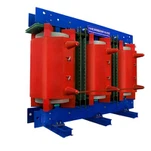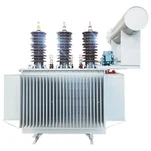The dry-out of the core and coil assembly is a critical step in the manufacturing of transformers. It ensures that any residual moisture in the insulation material is removed, which is essential for the transformer's long-term performance and dielectric integrity. The process is carefully controlled through several methods and monitoring systems, typically involving vacuum drying, heat application, and moisture measurement. Below is an overview of the process and how it is managed prior to final clamping.
Steps and Control Methods in the Dry-out Process
1. Pre-heating Stage:
The assembly is gradually heated to remove surface moisture.
Heating methods: Hot air circulation, oven heating, or infrared heaters.
Temperature is carefully controlled to prevent insulation degradation.
Control:
Temperature sensors ensure uniform heating.
Rates of temperature increase are monitored to avoid stress in insulation materials.
2. Vacuum Drying:
The core and coil assembly is placed in a vacuum chamber.
Vacuum reduces the boiling point of water, allowing moisture trapped inside the insulation to evaporate.
Control:
Vacuum pressure is monitored to ensure it stays within the required range (usually below 1 mbar).
Temperature probes measure heat distribution to ensure the assembly dries uniformly.
Dew point analyzers or moisture sensors monitor the presence of residual moisture.
3. Monitoring Moisture Levels:
Sensors continuously track the moisture content of the insulation material.
Time-based protocols or moisture sensors (Karl Fischer titration in some cases) determine when the insulation is sufficiently dry.
4. Heat-Cycling in Vacuum:
Some transformers undergo multiple heat-vacuum cycles to achieve complete moisture removal, especially in thicker insulation layers.
The cycles are precisely timed, with gradual temperature changes between vacuum stages.
5. Nitrogen Purging (Optional):
In some processes, dry nitrogen is used to flush the chamber to prevent oxidation during drying.
6. End-Point Determination:
The process ends when moisture levels fall within the acceptable range, as indicated by dew point monitoring or moisture meters.
Control:
Final parameters are logged to confirm compliance with design specifications.
Test results are reviewed to ensure the insulation is adequately dry and no thermal damage has occurred.
Key Considerations Before Final Clamping
1. Uniform Drying: Ensures that the entire assembly, including winding insulation and spacers, has reached the desired moisture level.
2. Preventing Recontamination: The assembly must remain in a controlled environment (vacuum or dry air) until clamping to avoid moisture absorption.
3. Residual Stress Management: The core and coil assembly must be allowed to cool gradually to avoid thermal stresses, ensuring proper alignment for final clamping.
This careful control ensures that the insulation properties are preserved, preventing premature aging and dielectric failure.










